Table of Contents
-
- 1. Prepare in Advance
- 2. Select the Equipment
- 3. Choose the Appropriate Type of Lighting
- 4. Choose a Lens
- 5. Select a Background for Shooting
- 6. Build a Photo Composition
- 7. Set up the Studio Photography Technique
- 8. Focus on the Model’s Eyes
- 9. Choose the Right Makeup
- 10. Set Up Contact With the Model
- Create Your Photography Portfolio Website
Are you not satisfied with the result when taking portrait shots? You have prepared the perfect camera, image, and technique for this, but does it not work? Don't be nervous. We have tips for solving such inconveniences:
- Choose the type of lighting suitable for certain photography
- Select the right equipment
- Choose a lens
The portrait is one of the most common genres in photography. Portrait shooting has many subtleties, without which the picture will not take place. For this reason, studio portrait photography is one of the most difficult genres. It does not just convey the external features of a person. It shows the depth of the human soul through the frame. But it is in case you do it in the right light and with the proper perspective.
If you do it in a studio, it adds considerable difficulties. After all, studio shooting must be accompanied by professional equipment. It includes lamps, backdrops, tripods, flashes, and reflectors. It is all necessary for excellent lighting and quality of portrait photos. But how to create great shots and the right atmosphere in the studio? Read our studio photography tips that will help you with this.

1. Prepare in Advance
The creation of a portrait begins long before the actual shooting. This approach to studio portrait photography will help you organize everything calmly and not miss important moments. At least you should do it in a couple of days. Before going to the photo studio, both participants have to do some work:
For a model, you should carefully consider your image:
- Choose the appropriate decorations. It especially applies to earrings and necklaces most visible in the frame.
- You should also do trial make-up for studio portrait photography. It is essential to note that you should not emphasize the eyes and lips at the same time.
- Focus on one thing so that the portrait has a harmonious look.
- And of course, try on your clothes in advance. If you don't like your image, you will have time to change your mind.
A photographer should perform several more serious tasks:
- It includes choosing the location, setting up the camera, and preparing the equipment.
- Also, the photographer should consider how they will take studio photos. Do you have enough storage? Is your camera charged?
- For your work to end with excellent results, we advise you to look at examples of portraits on the Internet. Then you will have a better idea of how to take studio photos.
The main thing is not to start performing all these actions half an hour before taking a photograph. In this case, you can miss something crucial.
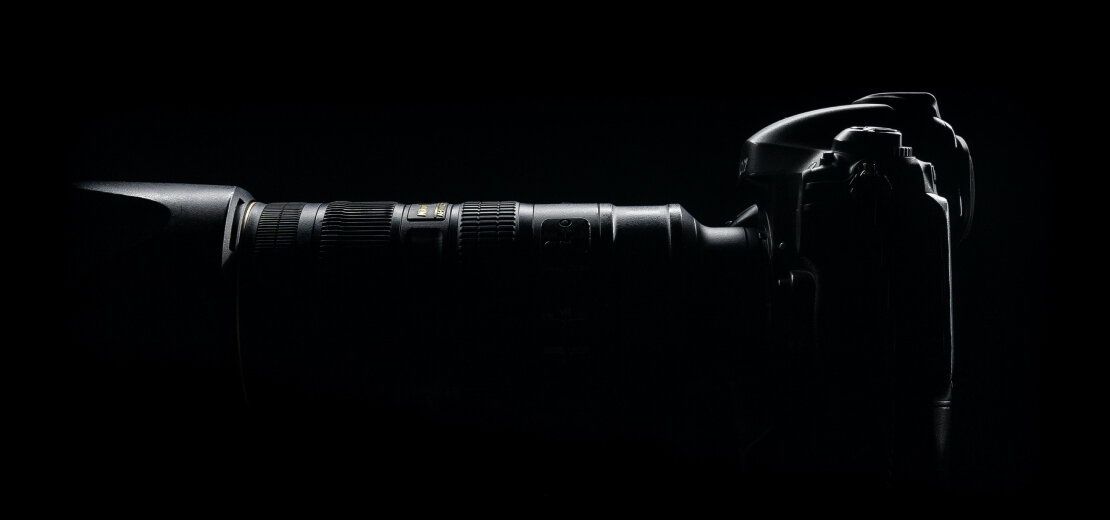
2. Select the Equipment
A high-quality photo portrait requires appropriate equipment. A photographer needs many tools to make a good shot in the studio. Most of them are necessary for setting up the light in the studio:
- Camera
The camera is the most crucial tool for studio portrait photography. It is evident that without it, you will not make pictures. But for them to be beautiful, it is better to use modern technology. It is much easier to work with it. But with the following tools, the portrait can turn out incredible even with an old camera.
- Flashes
This thing is for short, powerful bursts of light illuminating the shooting location. For portrait photography, it plays a decisive role in the result of the frame. After all, they can provide photos and lighting that you can lack in the studio. The main thing is to know how to take studio photos with these flashes.
- Synchronizers
It is equipment for simultaneous remote triggering of flashes. The synchronizer allows you to connect two devices at a considerable distance. And also work with several flashes and cameras, up to about 30 pieces. To make this process faster and easier, use a studio photography guide.
- Racks and holders
The need for heavy and bulky equipment is irrelevant. Because modern cameras, flashes, and other equipment are small and light. Conventionally, we can divide the racks into the standard studio and portable ones. If the photographer plans to replenish their home studio with heavy equipment, it is worth taking a rack. It will securely hold both a parabolic umbrella and professional flashes.
- Photo umbrellas and softboxes
This equipment come in different shapes and configurations. Which one to choose? It depends on the purpose of your shooting. This equipment is for softening harsh light. Without this, the photographer is unlikely to create excellent studio portrait techniques.
Besides, the photographer will need light modifiers, power supplies, backgrounds, and bags for storage and transportation. It will provide your camera with all the equipment and features you need. As a result, the photo portrait will be of higher quality.

3. Choose the Appropriate Type of Lighting
Every photographer knows that light is the primary tool in creating portrait photography. But it has several types which you can use in different ways. So, here is a studio photography guide on these kinds. And you should choose the most suitable for shooting a portrait:
- Wide light
It is full illumination of the side of the face turning the camera. This studio portrait technique creates a beautiful shadow on the model's cheek. It makes the effect of perfect facial skin and hides all imperfections.
- Short light
It is full illumination of the side of the face away from the camera. And it is partial illumination of the side of the face directed towards the camera. Such schemes are for photographing broad faces. The method is exciting and dramatic. Since the viewer sees more shadows in studio portrait photography. Besides, such lighting somewhat sharpens facial features.
- Split light
This type of lighting creates an effect like a lit candle. It illuminates only one part of the face. You should place this type of light at nose level. It can be raised or moved closer to the camera. It effectively narrows the face and nose and conceals facial defects.
It is essential to know what effect this or that lighting has. It is the only way to create great, perfect studio portrait techniques.
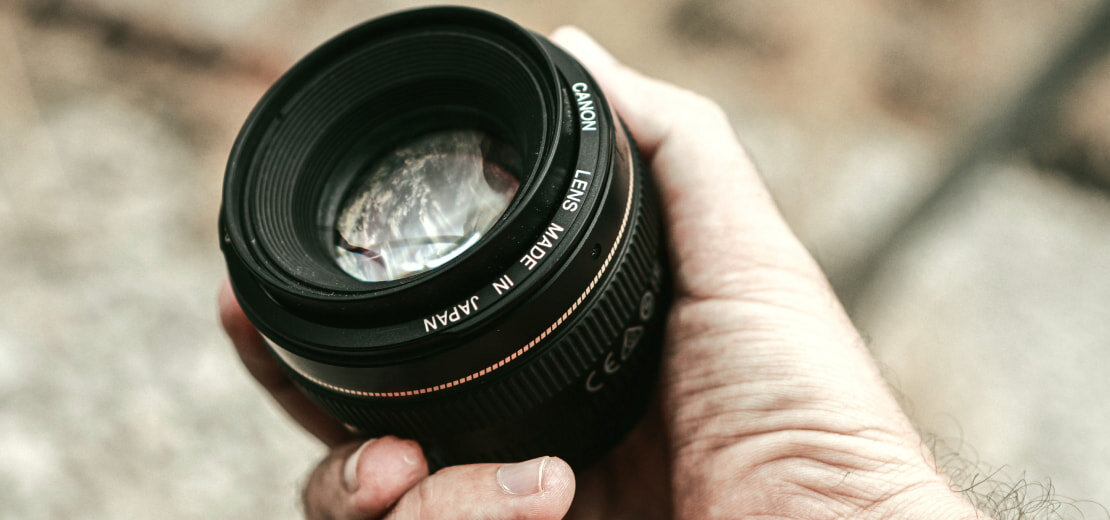
4. Choose a Lens
The quality of studio portrait technique performance depends on the lens you choose:
- For a face portrait, you need to take a lens with a focal length exceeding two times the normal.
- The standard focal length will be 50 mm if you work with full-frame optics.
- If you have a superzoom, the best distance is around 10mm.
- For a full-length portrait, it is better to use wide-angle or ultra-wide-angle lenses.
These are the general rules for the lens. Over time, you can create your style of photography. But for starters, we recommend using these studio photography tips. So you will know better how to take studio photos professionally.
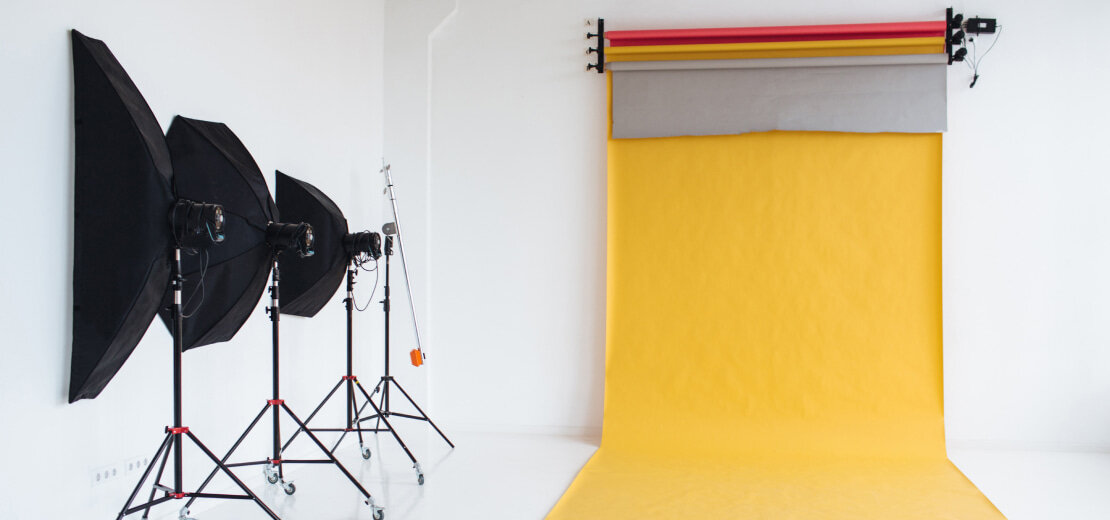
5. Select a Background for Shooting
The background can enrich or spoil the photo portrait. After all, color is one of the most prominent elements of a composition. Thus, before starting the process of taking pictures, adjust the background. If you don't know which one is better, there is a studio photography guide:
- Paper background
It is number one in professional studios. Although recently it is also popular at home. A paper background has many advantages for shooting portraits. It is matte, meaning the light falls evenly without reflections on the photo. Also, it has almost no texture, so nothing will distract from the subject.
- Plastic background
These are plates of elastic plastic. The standard thickness of which is from 0.3 to 0.8 mm. Our tip for unique studio photography is to use a thicker plastic background. But you should consider that such a background is complicated to bend. But the results of studio portrait photography are incredible.
- Fabric background
This option is the opposite of the paper option in terms of its properties. It is because fabric backgrounds are reusable. You can wash it or send it to the dry cleaners when it gets dirty. The process of restoring purity depends on the background's quality.
- Non-woven background
It is a synthetic canvas. Manufacturers usually sell it in rolls on cardboard tubes. You can use it many times when knowing how to take studio photos on such a background.
If you do not have the opportunity to choose a background, you can always paint the walls in a different shade. And one more option is using studio walls.

6. Build a Photo Composition
In portrait photography, compositional rules apply as in other genres of photography. But you should pay attention to specific differences there. So keep the studio photography guide on it:
- The rule of thirds
Divide the portrait into nine squares. Make sure that the critical points of the picture are at the intersection of the dividing lines. According to this studio photography tip, it is better not to place the person in the center of the portrait.
- Cropping
The main thing is not to frame the portrait along the joint lines. That includes the lines of the elbows, chin, and eyebrows. This way, you can determine what will be in the frame and what will not.
- Framing
Place the model in a natural or spatial frame. For example, put windows or arches in the opening.
- Eye placement rule
Shoot the studio portrait photography so that one of the model's eyes is in the center of the frame or along the centerline. It will create an effect as if the model is looking at the viewer. In bust and waist portraits, it is better to place the eyes of the model above the center.
So that the composition is not dull, you can ask the model to pose and look the other way. But watch the direction of the gaze. If the person is looking to the left, fill the left side of the frame with space. According to such studio photography tips, the results will be professional.

7. Set up the Studio Photography Technique
You can use any camera for a portrait, but digital has more advantages. They have operational efficiency and the ability to change optics. Camera settings depend on the location and style of the photo. But at least three elements are essential for a portrait:
- Diaphragm
It handles sharpness. The wider you open the aperture, the sharper the face and the more blurred the background. It is optimal to use an aperture of f/2 and f/4 for studio portrait photography. A wide-open aperture (f1.8–1.4) powerfully blurs the picture's background. Also, it makes the image more impressive. This approach helps to focus on the face of the model, separating it from the scene. The further the model is from the background, the stronger the blur.
- Shutter speed
It allows you to take photos in motion. But since portraits are usually static, make the shutter speed shorter. The best setting is no more than 1/200–1/250. Usually, professionals avoid excessive exposure so that the photo is not blurred. But you will not always shoot static portraits. Sometimes the model will run, jump, and swim. In this case, you should use another studio portrait technique. For this, increase the shutter speed.
- ISO
It affects how dark or light the portraits will be. Thus, set the ISO as low as possible. These are indicators between 100 and 400. It will help to avoid unnecessary noise and get a high-quality portrait.
- Shoot in RAW
The advantage of the RAW format is that it allows you to capture the technical aspects of the image. It includes contrast, color, and hue. Besides, RAW quality enables you to work more thoroughly with studio portrait photography in post-processing.
Try to shoot in manual mode to give you more control. But don't use serial mode. It will help you learn how to get a good shot the first time.
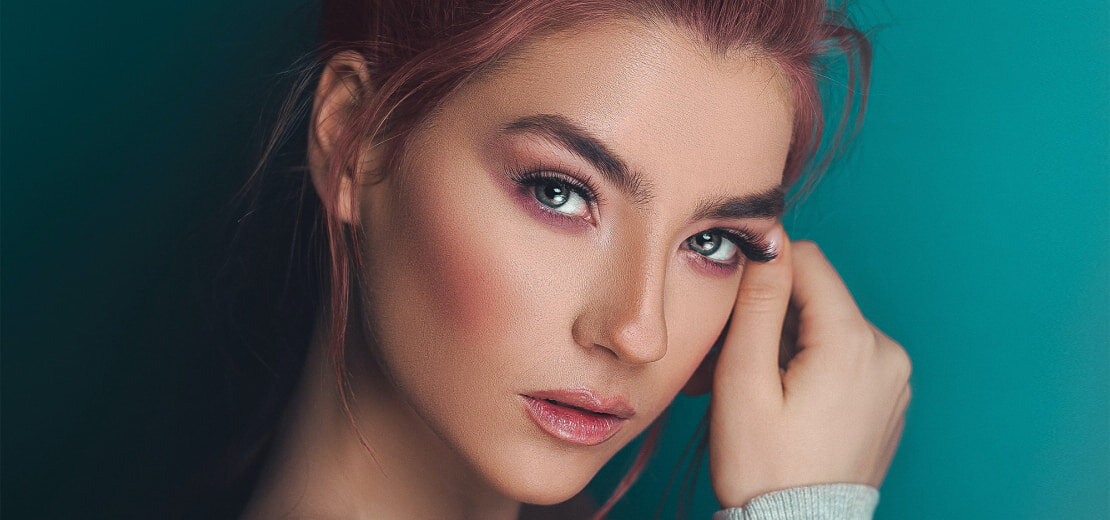
8. Focus on the Model’s Eyes
The look is the most critical part of the portrait. Eyes best convey human emotions and attract attention. No matter how superb the composition or lighting is, it's a failure if the eyes are blurry. So, you should know how to take studio photos emphasizing the eyes:
- If you're looking away, don't look too far away. Otherwise, the whites of the eyes will be visible in the frame. It seems completely unattractive.
- If you don't want to pose full-face, turn your face half-turned. When you return to the lens in profile, ensure that the line of the nose is not interrupted by the other cheek.
A frequent mistake when taking images is an unattractive gaze. To avoid this, help the model to pose. Tell them which way is better to look. If the work of the model is not enough for good results, try to evoke certain emotions in them. Then the gaze will create an outstanding photo. Thanks to these studio photography tips, your portraits can be more successful. And you can even create a fashion design portfolio further.
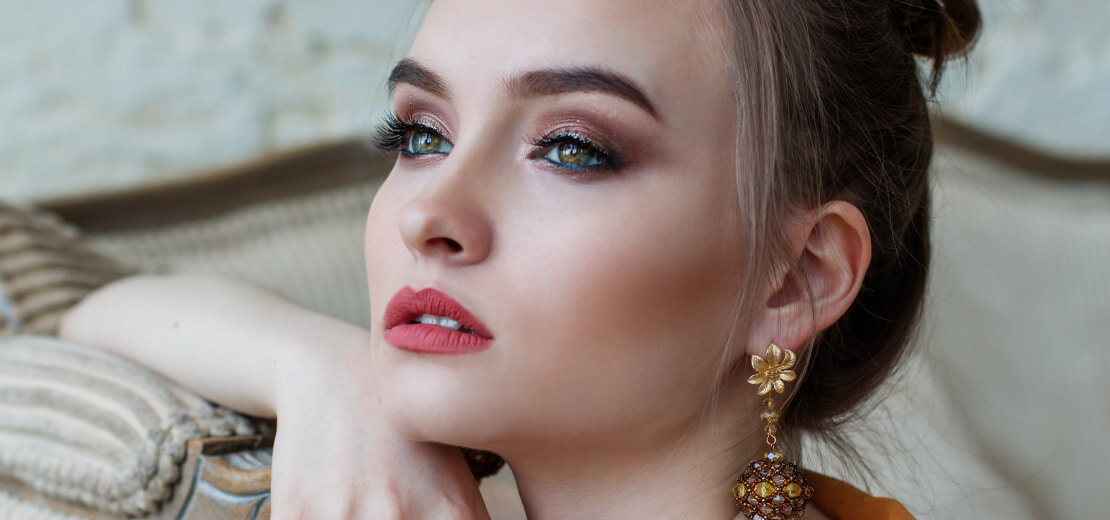
9. Choose the Right Makeup
If you are going to do studio portrait photography, you should emphasize something about makeup. It should be bright and clearly expressed. Why? Because the camera can take away half of the brightness from the photo. That is, if you have barely noticeable red lipstick on your lips, it will not be clear in the photo. For this reason, it is worth contouring and applying cosmetics more brightly. Besides, there are many other tips so that you know how to take studio photos best:
- Avoid liquid textures that can float under the light of the soffits. Because of this, an oily shine can appear on the face. Matting primers and loose powder will help to avoid this.
- To make the skin look fresh, use concealers and highlighters. They create point-light reflections.
- Emphasize the cheekbones and temples, and gently mark the face's oval.
Studio portrait photography is an excellent opportunity to experiment with makeup. Because there are no limits to this in the room. You can apply makeup, play with textures, and combine bright colors. If you like something, you can settle on one or another option.
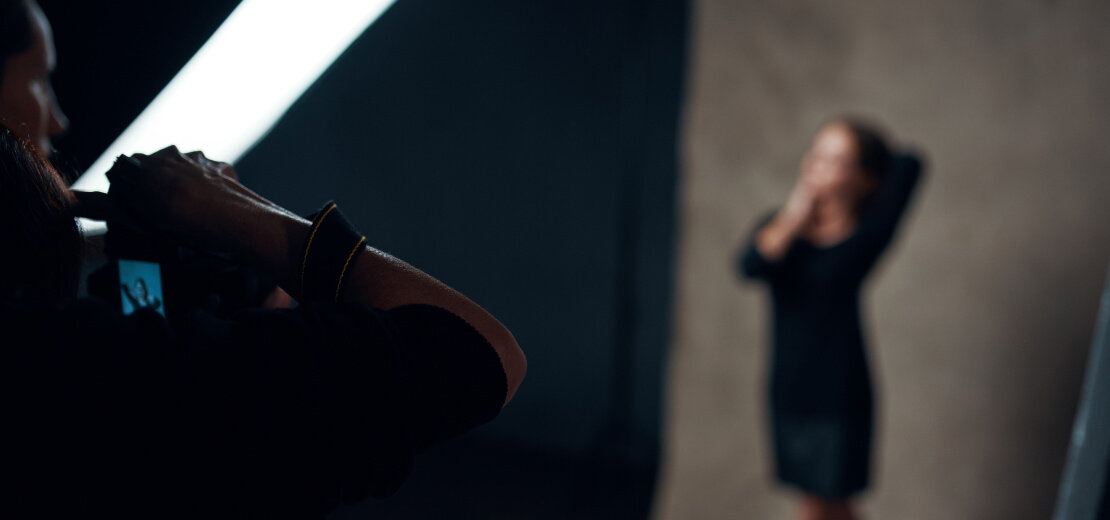
10. Set Up Contact With the Model
All successful photos result from good communication between the model and the photographer. If there is no connection between them, the images are unlikely to turn out well. So, before taking a photo portrait, find a relationship with the model. It will help you be calm and get into the process faster:
- If this is not a professional model in front of the lens, it is better to coordinate the studio portrait techniques yourself. The main thing is that a person does not feel tension, discomfort, or fear.
- Don't be emotionless. Communicate with the model, and help them feel relaxed and at ease. Start the photo session with a conversation. You can ask how their mood is, what your model is interested in, and tell a little about yourself.
- A good portrait artist must be able to reveal the inner world of a person. And this is possible only when you and the model have a sincere emotional connection and trust. So, help the model with posing. Not everyone knows how to show themselves in front of the camera properly. It can make the model feel embarrassed and lose confidence.
It doesn't matter if you are familiar with the model or not. In any case, you should find a connection with them on studio portrait photography.
Create Your Photography Portfolio Website
These are crucial studio photography tips. It is necessary to know them to carry out high-quality and pleasant photo shooting for both the photographer and the model. Sometimes you can break these rules for a non-standard result. And this applies not only to portrait photography but also to other types of it. What exactly? Portfoliobox will tell you about it. On our website, we will discuss all the nuances and secrets of various shootings.












